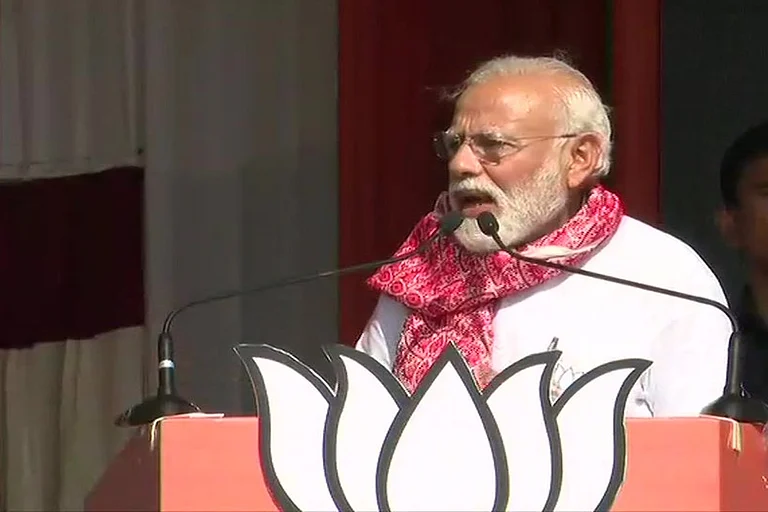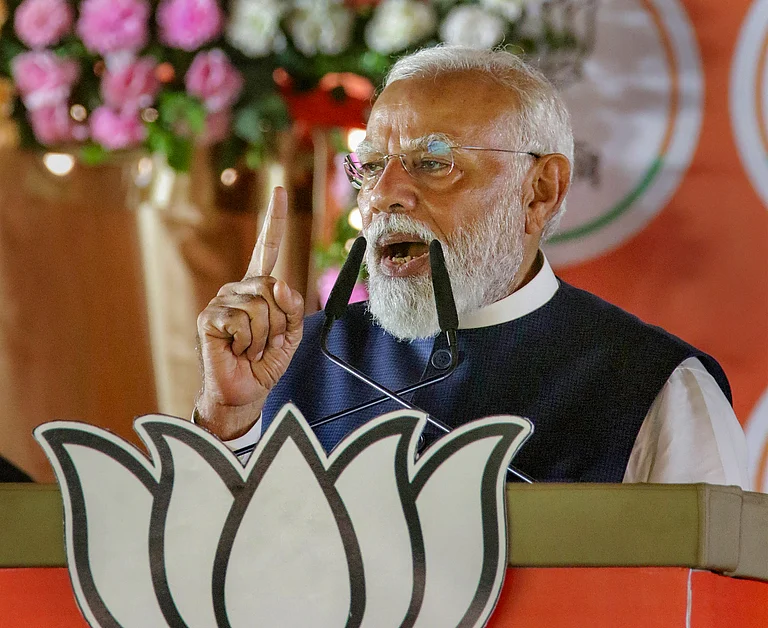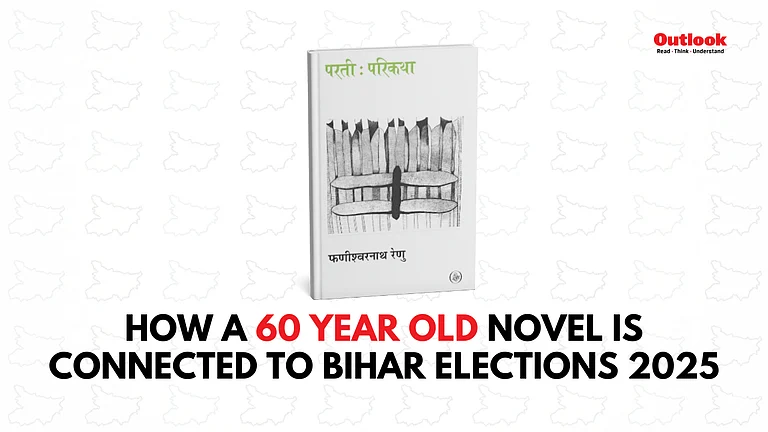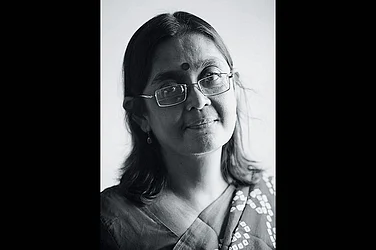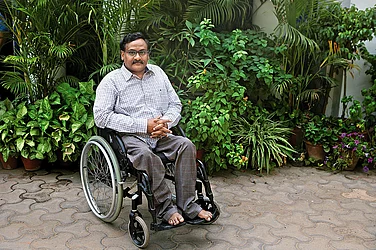On August 7, 1990, Prime Minister V P Singh, while implementing the recommendations of the Mandal Commission—that included giving 27 per cent reservation to the socially and educationally backward classes—said on the floor of the house: “It is a momentous decision of social justice”. Evoking the legacy of Babasaheb Ambedkar, who tirelessly fought for social and political reservation for the Scheduled Castes (SC) and the Scheduled Tribes (ST), Singh added: “The present decisions are along the same lines, and belong to the tradition of this government’s dedication to the cause of SCs, socially and educationally backward classes and other weaker sections.”
Though this declaration did not cause any immediate stir in the North, Singh was aware of the impending tectonic shift in Indian politics. As the Janata Dal’s (JD) two alliance partners—the Bharatiya Janata Party (BJP) and the Left—were not working in a syncretic manner, Singh, analysts say, wanted to strengthen the social alliance of the Ahir-Jat-Gujjar-and-Rajput (AJGAR) category that catapulted him to power in 1989. And the best way to do this was to implement the Mandal Commission recommendations.
In the following years, the social alliance of the OBCs and the Dalits, especially across Uttar Pradesh and Bihar, not only changed the fate of politics in India—with the exit of the Congress from both states—it also gave birth to the Kamandal politics that the BJP leveraged to consolidate all the Hindu castes.
After 33 years of the ‘momentous decision’, Indian politics is again witnessing a change. While the demands of Opposition parties—now consisting of the Congress that was earlier allegedly responsible for not implementing the recommendations of consecutive backward commissions—for a caste census are garnering strength, the ruling party has come up with the concept of ‘new castes’.
During the Viksit Bharat Sankalp Yatra in November 2023, while addressing the beneficiaries of welfare schemes, Prime Minister Narendra Modi said: “For me, there are four biggest castes in the country—the poor, the youth, the women and the farmers.” Emphasising his government’s focus on the development of these four castes, he added: “The upliftment of these four castes will make India developed, and if it happens to these four, it means it will happen to everyone.”
Indian politics is witnessing a change. While the demands of Opposition parties for a caste census are garnering strength, the ruling party has come up with the concept of ‘new castes’.
The evocation of this scheme of caste is new for PM Modi, who has mostly been found asserting his own caste identity. In 2019, responding to the allegation of Bahujan Samaj Party (BSP) supremo Mayawati that he is a ‘fake OBC’, PM Modi said that he is not only an OBC but also was born into the ‘most backward caste’. Earlier, in February, while responding to an allegation against the BJP that it does not have any OBC faces, he said: “I am surprised that they are unable to see that the senior-most position is occupied by an OBC.” Recently, even Rahul Gandhi questioned Modi’s OBC identity and claimed that the prime minister was born in the Teli caste that was not listed as OBC and was included in the list by the Gujarat government only in 2000.
So, when PM Modi refers to the poor, or for that matter the farmers, as a ‘caste’, is he addressing the class-based identities of these groups? The conflation of caste and class in Indian politics has its own history. Some political leaders thought that the assertion of class-based identity might outgrow the needs of caste-specific claims, but in some cases, caste became the determining factor.
***
In colonial times, between 1920 and 1940, Chhotu Ram, a Jat leader from Punjab, and Swami Sahahjanand, a Bhumihar leader from Bihar, became significant Kisan Sabha leaders and consolidated the farmers’ movement. But this mobilisation was mostly class-based. French political scientist Christophe Jaffrelot, in one of his articles, notes: “The proponents of the “kisan politics” came primarily from the rank of peasant-proprietors who tried to mobilise “the peasants” —as if that were a social category without internal differentiation—to promote their own interest and maintain lower castes under their influence. The caste-based approach was rather conceived for defending the latter.”
In the 1960s and 1970s, under the leadership of Chaudhury Charan Singh, several farmers entered the UP and Bihar Legislative Assemblies. Certainly, Singh’s efforts to subsume the caste identity within the broader identity of the farmers stemmed from his own Jat identity—Jats comprised a minuscule 1.2 per cent of the UP population. Critics note that his interests represented mostly those of the Jat landowners.
However, the socialist movement took a caste-based turn in the next few decades (during the 80s and 90s) following Ram Manohar Lohia’s ideology and the “kisan front broke down along caste lines, the peasant proprietors from the intermediate castes distancing themselves from the OBCs,” notes Jaffrelot. This led to the formation of the Mandal Commission and the consecutive implementation of the report.
While talking about the socialist illusion of class as a determining factor in Indian politics, Lohia said: “Many socialists honestly, but wrongly, think that it is sufficient to strive for economic equality and caste inequality will vanish consequently. They fail to comprehend economic inequality and caste inequality as twin demons; both must be killed.”

Notably, the socialist parties had been asking for a 60 per cent reservation for all backward castes since Independence. The first draft of the conference of the Samuyukta Socialist Party noted in 1966: “In a society characterised by a hierarchical structure based on birth, the principle of equal opportunity cannot produce an equal society. The established, conventional notions about merit and ability must result in the denial of opportunities in actual practice for backward castes, harijans (Scheduled Castes), Adivasis (Scheduled Tribes).”
Though the Congress has been trying to socially mobilise the OBCs, their latest campaign focus is the poor, the youth, women and farmers—Modi’s four castes.
So, on the one hand, there was a political segment that wanted to unitedly represent the farmers—mostly the landowners—without addressing the caste cleavages; on the other, there were leaders like Lohia who favoured affirmative actions based on caste. These two streams of political consciousness, nevertheless, got merged in the JP movement.
Madhu Limaye, who later became the deputy PM in the Morarji Desai government, while drafting a document for the movement in 1975, wrote: “Caste hierarchy based on birth is the biggest obstacle in the path of achieving social equality. In an unequal society, the doctrine of judicial equality and equal opportunity cannot by itself remove caste disabilities. The doctrine of preferential opportunity, therefore, had to be invoked in order to enable the backward sections to come up to the level of the upper castes.”
The document also added, “Reservation in the services that we have today had not enabled us to overcome the disabilities from which our suppressed communities suffer [. . . I This must change, and these people and other backward classes should be enabled to secure, through preferential opportunities and reservation, the substance of power.”
This promise was perhaps a prelude to Desai’s deployment of the Backward Classes Commission under B P Mandal on December 20, 1978. Though the Commission submitted its report in 1980, the following Congress governments did not take any initiative to implement it; it was V P Singh who made it a reality. The emergence of political parties in the North, like the Samajwadi Party, the BSP, the Rashtriya Janata Dal (RJD), the Janata Dal (United), Janata Dal (Secular)—to name a few—depicts the new political trajectory that decimated the decade-long domination of the Congress.
***
However, after three decades, it is the Opposition led by the Congress that is demanding a caste census to understand the socio-economic condition of the OBCs. Parties like the RJD, and the SP—that once were mostly responsible for the elimination of the Grand Old Party from the north Indian states—have come together to claim “jitni abadi utna haq”.
As the BJP continues to evoke the poor, farmers, youth and women as new castes, the Congress leadership calls it a ‘gimmick’. Abbas Hafeez Khan, a senior Congress leader and the spokesperson of the party in Madhya Pradesh, says: “If they are not concerned about the caste equation, why did they choose Mohan Yadav as the CM of Madhya Pradesh? Why did they remove a Khattar and place an OBC leader in Haryana?”
The latest instance of Haryana—where the BJP, following its ally Dushyant Chautala’s (JJP) departure from the NDA, deployed Nayab Singh Saini, an OBC leader as the CM— further emphasises their focus on castes, says a Congress leader. “If the BJP considers women as a caste, why didn’t they actually make a woman CM?” asks Khan.
The government’s decision to give the Bharat Ratna to Jat leader Chaudhary Charan Singh and social justice leader Karpoori Thakur represents the social engineering politics of the BJP. “You can see that after Thakur’s Bharat Ratna, Nitish Kumar went back to the NDA fold and after Charan Singh, it was the RLD’s turn,” says a senior journalist. On the one hand, they addressed the Jat and farmers through Charan Singh, on the other they signalled the EBCs through Thakur, he adds.
Debunking the BJP’s claims of addressing the concerns of backward castes, Ghanshyam Tiwari, the National Spokesperson of the SP, says: “This is merely a packaging. The BJP’s major support base is the upper caste people. If you still look at the outcomes of different competitive exams, you can get a sense of how the power is getting consolidated in the hands of a few upper caste people who don’t believe in social justice.” He adds that the BJP has always used symbolism to hide their policies against the poor, Dalits, women, and OBCs.
***
Modi’s evocation of his own OBC identity to the deployment of Yadavs and other OBC leaders as the CMs of different states speak volumes about the party’s social engineering politics. But why was it necessary to invoke a new caste scheme? Yatindra Singh Sisodia, a political scientist and director of the Madhya Pradesh Institute of Social Science Research, says: “Caste is a huge reality of Indian society and, therefore, it is a very smart move to use the metaphor of caste as poor, youth, women and farmers. It appears that more than 90 per cent of the population falls under this block, and the focus of the government’s policies and programmes has also been around these four categories; a special concentration on women and the poor is loudly discernible.”
Interestingly, Jawhar Sircar, the TMC Rajya Sabha MP, thinks that these new caste categories are the ‘BJP’s four areas of complete defeat’. “If you see the women legislature percentage of the BJP, it is just tokenism. Compare it with the TMC and you can find. As far as the youths are concerned, the unemployment rate of the young people belonging to the age group 20-25 years is 45 per cent. In the case of farmers and poor, we don’t need to even emphasise. Everyone knows it,” says Sircar. He also adds that the BJP always tried to divide the marginalised castes through weighing on the non-dominant castes. “They focused on the non-Jatav Dalits and the non-Yadav OBCs to divide these communities,” says the MP.
However, political scientist and author Aditya Nigam notes that there are two major factors that one must consider to understand Modi’s new caste scheme. Firstly, it is an effort to deflect the demands of the Dalit Bahujan castes—especially the demands for a caste census. “And secondly, it is linked to a longstanding position of the RSS that believes its project of Hindu Unity can only be achieved by deflecting the question of caste oppression,” says Nigam.
He also refers to the parliamentary debate that followed the tabling of the Indian Social Disparities Abolition Bill of 1977 by MP Roop Narayan Yadav. “If you go through that debate 47 years ago, you can see that the RSS-linked member of the Janata Party (former Jan Sangh, the BJP did not exist then) making this argument repeatedly. They, of course, argued that it would negatively affect ‘national integration’ (a euphemism for Hindu unity). Instead, they suggested reversing the discrimination or reservations on economic grounds,” he adds.
Political scientist Satish K Jha agrees with Nigam: “The Hindutva ideologues since Savarkar have been trying to forge larger unity of Hindu society and have always found caste-based party politics as the biggest hindrance in this mission and the Mandal moment was the high point of it,” he says.
While analysts think that the ruling party is trying to dodge the caste-census claims of the Opposition through the evocation of these new castes, till now, the BJP is the only party that has categorically emphasised the percentage of OBC candidates in its first list. Vinod Tawde, the general secretary of the BJP, during the announcement of the 195 candidates, noted that 57 (29 per cent) belong to the OBC community. Currently, the party has 85 OBC MPs among 303 in Parliament.
So, on the one hand, there is a push from the BJP to promote new caste identities through welfare schemes, and on the other, they are not even ceding the space of OBC votes to the Opposition. “The BJP, through its politics, solidified religious consolidation and provided adequate space to the OBC leadership within the party organisation and the government, along with the focus of policy and programmes majorly addressing the concerns of the caste/class combination,” says Sisodia.
MORE FROM THIS ISSUE
Though the Congress has been trying to socially mobilise the OBCs, their latest focus of the campaign is the poor, the youth, women and farmers—Modi’s four castes. During his Bharat Nyay Yatra, Gandhi several times invoked the issues of unemployment of youth and declared Nyay for women— with a promise of Rs 1 lakh per annum to eligible women per annum. Following the recent farmers’ protests, the party also announced that it would bring an act to fix the Minimum Support Price (MSP). But what would be the caste scheme that would impact these elections? Perhaps, the answer lies beyond the politics of Mandal-Kamandal.
(This appeared in the print as 'The Politics Of New Castes')









